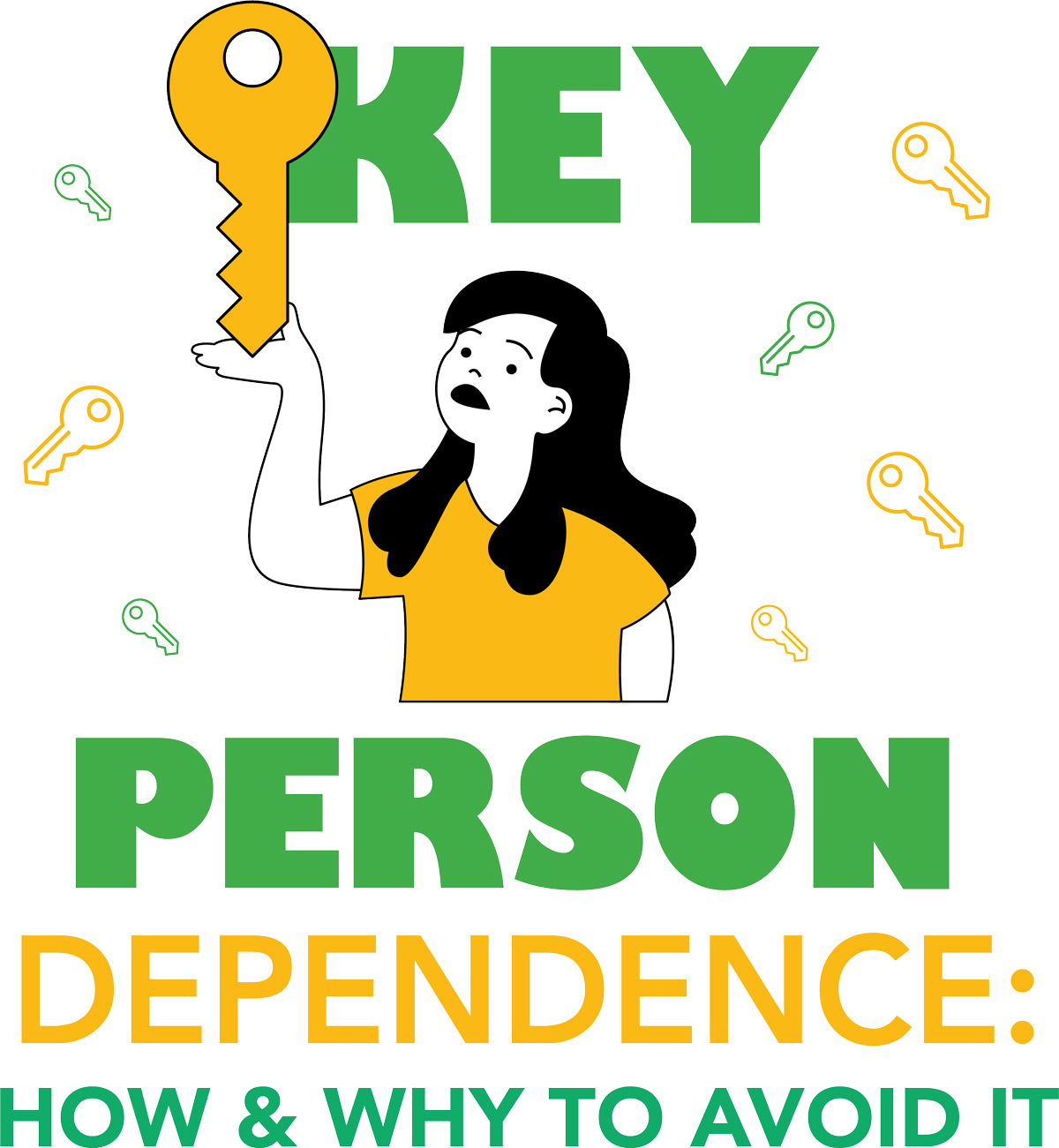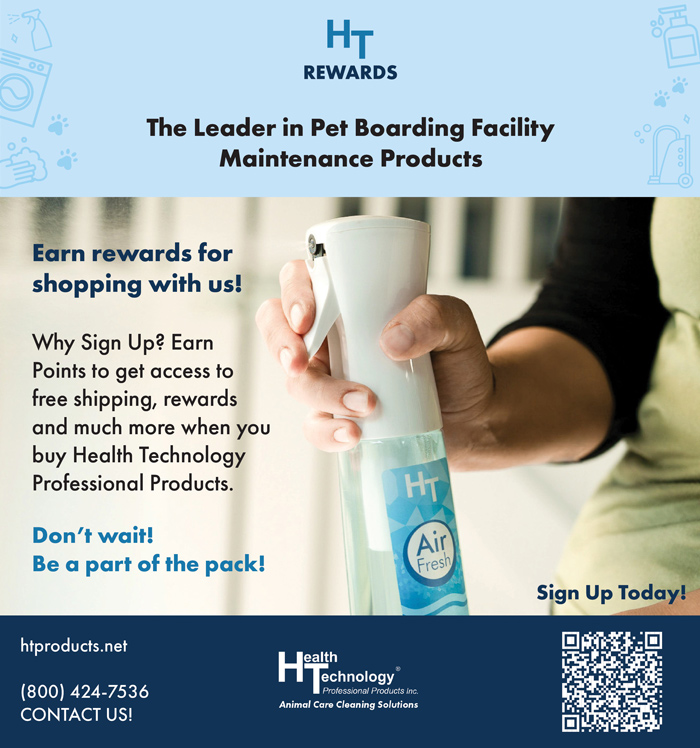
By Laura Laaman
Do you feel like your business would fall apart without you? As if you’re removing the machine’s central cog when you step away?
 any pet care facility owners end up fully immersed in nearly every aspect of their business and can hardly come up for air. They and/or their manager(s) are often solely responsible for numerous critical tasks. If they should get sick, have a family emergency or simply want to take well-deserved time off, there’s nobody to do those tasks. This is key person dependence, a common and dangerous tendency in the pet care industry.
any pet care facility owners end up fully immersed in nearly every aspect of their business and can hardly come up for air. They and/or their manager(s) are often solely responsible for numerous critical tasks. If they should get sick, have a family emergency or simply want to take well-deserved time off, there’s nobody to do those tasks. This is key person dependence, a common and dangerous tendency in the pet care industry.
It’s extremely stressful and risky when your business’s success depends on a particular person showing up and doing a great job every day. But it doesn’t have to be a showstopper when you or your manager is out. It doesn’t have to be a fiasco when your groomer suddenly resigns. It doesn’t even have to be a worry-filled guilt trip if you want to go on vacation with your family. In this article, we’ll explore the ways key person dependence can negatively impact your business and what you can do to avoid or fix it.
- Grooming
- Dog training
- Hiring
- Scheduling
- Payroll
- Training new employees
- Purchasing and facility maintenance
- Dealing with customer situations
- Communications with clients and veterinarians

Call-offs, emergencies and abrupt resignations are inevitable. If you’re relying on any one person to complete a task, their absence can derail a department or business overall.
- Employee burnout. When there’s no one else who knows how to perform a necessary duty, it can put undue stress on that person. They may feel overtaxed and unable to take necessary time off, thus affecting morale and even employee retention.
- Reduced quality of pet care. When your key person is out, it can easily lead to gaps in care and overlooked or improperly done tasks. For example, how many people create the schedule in your business? If it’s just one, and that person is unavailable, it can upset proper care.
- Reduced quality of customer service. Taking great care of the pet parents is as important as taking great care of the pets. Business disruptions caused by key person absences can bubble out into customer care, therefore affecting the quality and timeliness of service.
- Business salability. A business that’s dependent on its owner and/or manager(s) to function can be difficult to sell—especially profitably. High-paying consolidators want a turnkey business that operates seamlessly, regardless of who’s working that day.
- Owner quality of life. If you’re like many pet care facility owners, you’re the key person for multiple (or possibly most) tasks. This can be incredibly stressful and often reduces the owner’s ability to enjoy their business. And, unfortunately, sometimes leads to selling prematurely.
- Put a training plan in place. It’s wise to train multiple people on every task to ensure there’s a backup person (and even a backup’s backup). You may also consider preparing a response plan to quickly train a new person should someone quit, need extended time off or be otherwise unavailable.
- Have enough staff. Due to lackluster revenue, many pet care facility owners hire minimal staff to reduce labor costs; however, this almost always leads to more harm than good. Not having enough quality team members is a recipe for key person dependence, as there’s simply no other choice. It can also lead to higher turnover, thus compounding other issues.
- Add more roles. How many roles do you have between pet care technician and manager? If you’re like most, probably only one (or none). Adding more levels, like senior pet care technician and pet care supervisor, spreads out responsibilities and adds accountability. Plus, it gives your employees a career growth path, which can dramatically improve motivation and longevity.
- Support a great management team. Establishing a cohesive, effective team of managers goes a long way in the health of your business. Managers are the owner’s eyes and ears on the ground, and without a strong team of them, the owner will struggle to shake key person dependence. In pet care, managers often earn their roles through providing great care to the pets—but are they trained in vital management skills, too?
- Implement systems. A “system” is a structured set of processes, tools, and training to streamline and optimize a task or service for a more self-sufficient business. Systems should be documented, verified and deliverable by multiple people, and can be useful nearly anywhere. Some of the most important areas include new customer acquisition, employee hiring/training and marketing, among many others.
- Have a robust operations manual. A thorough and updated operations manual can be incredibly beneficial. It can help ensure tasks are being executed properly and consistently, and it serves as a reference point for the proper way to complete a task if there is ever a question or gap in coverage.
- Create a healthy revenue flow. Strong revenues are critical to every part of a pet care business. And if you’re adding team members or roles, you need the revenue to offset the cost. It’s important to regularly re-evaluate your profit centers for any opportunities—overnight care, daycare, grooming and training can all produce more revenue if you don’t already offer them.

Not having enough quality team members is a recipe for key person dependence, as there’s simply no other choice. It can also lead to higher turnover, thus compounding other issues.
Laura Laaman is president of Outstanding Pet Care. Outstanding Pet Care’s Revenue Building Services and Absentee Owner—Staff & Management Development Program provide the tools you need to apply these strategies successfully. If you’re interested in a healthier and more rewarding business, schedule a consultation by calling 1-888-836-8740 or visiting www.outstandingpetcare.com/contact


